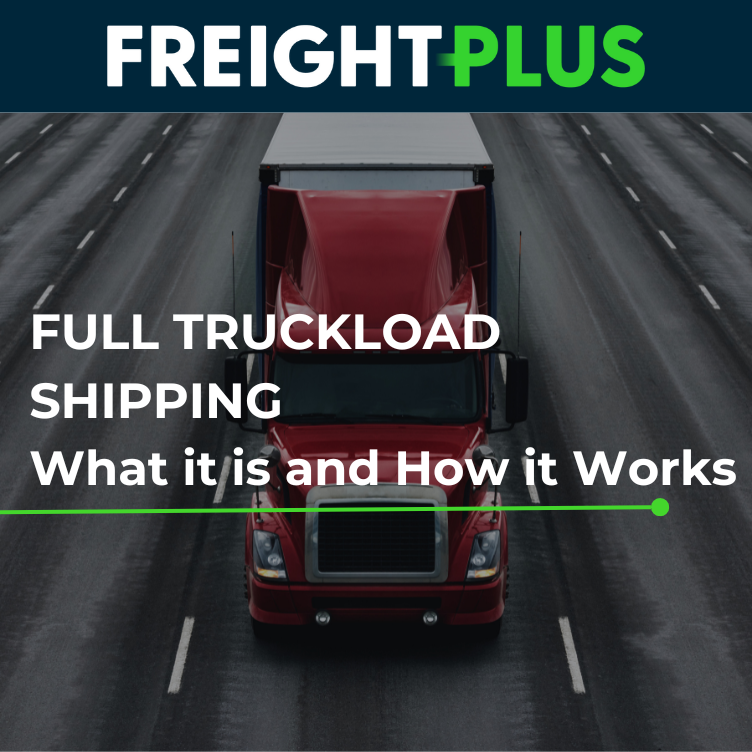Jill Clifford, freight expert, explains what is over-the-road full truckload shipping and how over-the-road it works. Additionally, Jill talks through some elements you need to think about when transporting freight with it.
Full truckload is when a driver with a trailer shows up at a dock and the shipper fills the trailer with freight. The trucker then drives that freight straight through and delivers it to its final destination. Unlike LTL shipping which moves at different spots with local and line haul drivers, the full truckload only has one driver throughout the haul.
Below are some types of equipment in the truckload mode. There are 19 types of equipment but we are going to highlight the most used to give a better level of understanding.
Dry Van
The first piece we are going to discuss is a dry van. A dry van is a full 48 or 53 foot trailer that is covered at all sides and is hooked up to a trailer. Dry Vans can also sometimes require blankets or straps and load bars to keep the product protected and safe and prevent it from shifting. You can also ask for another floor in the trailer if your product is not stackable which will give you better utilization of the equipment.
Refrigerated
Another type of equipment you can have is refrigerated equipment. This would be used if you were shipping certain medical supplies, drugs, chemicals, or food. This trailer is usually 48 or 53 feet but it also has a refer unit on it, it can be plugged into the trailer to keep the trailer at a certain temperature. Occasionally these trailers can have rounded corners which can cause you to lose shipping space inside the trailer.
Specialty (up to 200,00)
Specialty can be seen as liquid or HazMat – these trailers are usually round with a pump on it and require a special permit to carry liquid bulk. HazMat especially has special permits a rules that have to be followed for shipping.
Flatbeds
A flatbed is not a covered trailer with no sides or no roof. These are used because you can offload these trailers from any site. Within flatbeds you can have…
Extendable – this has an extension underneath the flatbed that will allow the trailer to have extra length.
Step deck- this trailer has two floors and is used because it is lower to the ground so you can have higher heighted product.
Low boy (80,000) – looks like a step deck but has two axles so you can cover almost 80,000 pounds, it is used a lot for excavation equipment. Within this you also have an RGN (removable gooseneck) which allows you to take the step deck or tractor off the trailer and put it directly to the ground.
Conestoga – a type of flat bed that allows you to transport longer items like steel coils or lumber but you still want coverage. This has a removable tarp and allows the trailer to become enclosed.
It is important to understand different types of trailers in truckload because they will absolutely dictate cost. Another thing in truckload you want to understand is mileage. Drivers are allowed a 14 hour shift in the US today. Within the 14 hours you can legally drive for 10 of them and then you are required to rest for 10 hours. If you are looking for faster service you can use what is called team drivers which are two drivers who trade off back and forth in order to speed up the driving process. While one drives the other rests and vice versa so it limits the amount of transit time while still abiding by the laws. One important thing to remember is in the truckload mode drivers get paid to drive, so if they have to do any more than that you need to spell that out to the driver so you are getting the service you need.



